US dollar banknotes has 7 different banknotes in different values and sizes: $1, $2, $5, $10, $20, $50 and $100. US dollars are the legal and official currency of the United states, plus other 9 countries are official US dollar users: Ecuador, East Timor, El Salvador, Marshall Islands, Micronesia, Palau, Turks and Caicos, British Virgin Islands, Zimbabwe, so, those countries has the same US dollar exchange rate. Each denomination features a portrait of a famous American statesman on its face and an image reflective of the nation’s history on the back.
To check wether banknotes are real or fake, we represent all security features in main perspectives: feel the paper, tilt the note, check with light. Below we made analysis of each US dollar banknote security features, and here is the main actions you’ll need to do spot fake banknotes:
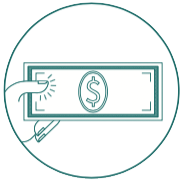
Move your finger across the note. It should feel slightly rough to the touch as a result of the printing process and the unique composition of the paper.
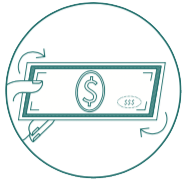
Tilt the note to see the ink in the numbers on the lower right corner change color. On the current style of notes, the color should change from copper to green.

Hold the note to light to check that the watermark and security thread are visible from the front and back of the note.
All US dollar banknotes: $1, $2, $5, $10, $20, $50, $100 security features in detail
$100 US dollar banknote security features. Recognize your 100 US dollar banknote is not fake, spot a fake banknote
The redesigned $100 note incorporates two advanced security features — the 3-D Security Ribbon and the Bell in the Inkwell — and other innovative enhancements. It is not necessary to trade in your old-design notes for new ones. All U.S. currency remains legal tender, regardless of when it was issued. Even with the most technologically advanced security features, it’s you — the educated consumer — who continues to be the best line of defense against counterfeiting. It only takes a few seconds to check the new $100 note and know it’s real. Learn how to identify and use the two advanced security features: the 3-D Security Ribbon and the Bell in the Inkwell.
$100 US dollar note size: 156 x 66.3 mm
Front Portrait: Benjamin Franklin, Declaration of Independence, quill pen, inkwell.
Back view of Independence Hall.
$100 US dollar Issued 2013 – Present
100 US dollar banknote. Front. Key Security Features. 100 US dollar banknote. Back. | 1) Federal Reserve System Seal. A black seal to the left of the portrait represents the entire Federal Reserve System. A letter and number beneath the left serial number identifies the distributing Federal Reserve Bank. 2) Microprinting.. Look carefully (magni cation may be necessary) to see the small printed text THE UNITED STATES OF AMERICA on Benjamin Franklin’s jacket collar, USA 100 around the blank space containing the portrait watermark, ONE HUNDRED USA along the golden quill, and small 100s in the note borders. 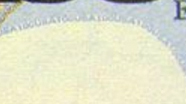 3) Raised Printing. Move your nger up and down Benjamin Franklin’s shoulder on the left side of the note. It should feel rough to the touch, a result of the enhanced intaglio printing process used to create the image. Traditional raised printing can be felt throughout the $100 note, and gives genuine Federal Reserve notes their distinctive texture. 4) Paper. Federal Reserve note paper is one-fourth linen and three-fourths cotton, and contains red and blue security bers. 5) Portrait and Vignette. The $100 note features a portrait of Benjamin Franklin on the front of the note and a vignette of Independence Hall on the back of the note. 6) Symbol of Freedom. Phrases from the Declaration of Independence and the quill the Founding Fathers used to sign the historic document are found to the right of the portrait. 7) Treasury Seal. A green seal to the right of the portrait represents the U.S. Department of the Treasury. 8) Serial Numbers. A unique combination of eleven numbers and letters appears twice on the front of the note. 9) Series Year. The design includes series years 2009 and 2009A. 10) Green 100. A large gold numeral 100 on the back of the note helps those with visual impairments distinguish the denomination. |
About US dollar exchange rate
US dollar is the most popular currency in the world and it could be called the father of currencies. US dollar exchange rates changes every minute an impacts all world economics. It is important to know how strong US dollar and what are US dollar exchange rates against other currencies. Most popular exchange rates people are following are: dollar to euro, us dollar to pound, us dollar to canadian dollar , us dollar to yen, us dollar to ruble, us dollar to zloty, us dollar to rand, etc. Also, we provide versatile currency converter, which lets to calculate all different currencies among each other.
$50 US dollar banknote security features. Recognize your 50 US dollar banknote is not fake, spot a fake banknote
The redesigned $50 note was rst issued in 2004. It has three key security features that are easy to check: a security thread, portrait watermark, and color-shifting numeral 50.
$50 US dollar note size: 156 x 66.3 mm
Front Portrait Ulysses S. Grant.
Back view of United States Capitol.
$50 US dollar Issued 2004 – Present
50 US dollar banknote. Front. Key Security Features. 50 US dollar banknote. Back. | 1) Federal Reserve System Seal. A black seal to the left of the portrait represents the entire Federal Reserve System. A letter and number beneath the left serial number identifies distributing Federal Reserve Bank. 2) Microprinting.. Look carefully (magni cation may be necessary) to see the small printed text FIFTY, USA, and 50 inside two of the blue stars to the left of the portrait, FIFTY repeated within both side borders of the note, and THE UNITED STATES OF AMERICA in President Grant’s collar. 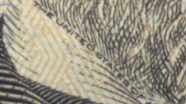 3) Raised Printing. Move your finger along the note’s surface to feel the raised printing, which gives genuine Federal Reserve notes their distinctive texture. 4) Paper. Federal Reserve note paper is one-fourth linen and three-fourths cotton, and contains red and blue security bers. 5) Color. The note includes subtle background colors of blue and red to both sides of the note. 6) Portrait and Vignette. The $50 note features a portrait of President Grant on the front of the note and a vignette of the United States Capitol on the back of the note. 7) Symbol of Freedom. Representative of the United States ag, a eld of blue stars is located to the left of the portrait, while three red stripes are located to the right of the portrait. A small metallic silver-blue star is located on the lower right side of the portrait. 8) Treasury Seal. A green seal to the right of the portrait represents the U.S. Department of the Treasury. 9) Serial Numbers. A unique combination of eleven numbers and letters appears twice on the front of the note. 10) Series Year. The design includes series years 2004, 2004A, 2006, 2009, and 2013. 11) Green 50. A large green numeral 50 on the back of the note helps those with visual impairments distinguish the denomination. |
USD exchange rates
$20 US dollar banknote security features. Recognize your 20 US dollar banknote is not fake, spot a fake banknote
The redesigned $20 note was first issued in 2003. It has three key security features that are easy to check: a security thread, portrait watermark, and color-shifting numeral 20.
$20 US dollar note size: 156 x 66.3 mm
Front Portrait Andrew Jackson
Back view of White House
$20 US dollar Issued 2003 – Present
20 US dollar banknote. Front. Key Security Features. 20 US dollar banknote. Back. | 1) Federal Reserve System Seal. A black seal to the left of the portrait represents the entire Federal Reserve System. A letter and number beneath the left serial number identifies distributing Federal Reserve Bank. 2) Microprinting.. Look carefully (magni cation may be necessary) to see the small printed text USA20 along the border of the first three letters of the blue TWENTY USA ribbon to the right of the portrait and THE UNITED STATES OF AMERICA 20 USA 20 in black in the border below the Treasurer’s signature. 3) Raised Printing. Move your finger along the note’s surface to feel the raised printing, which gives genuine Federal Reserve notes their distinctive texture. 4) Paper. Federal Reserve note paper is one-fourth linen and three-fourths cotton, and contains red and blue security bers. 5) Color. The note includes background colors of green and peach. The words TWENTY USA have been printed in blue in the background to the right of the portrait. 6) Portrait and Vignette. The $20 note features a portrait of President Jackson on the front of the note and a vignette of the White House on the back of the note. 7) Symbol of Freedom. The large blue eagle in the background to the left of President Jackson’s portrait is representative of those drawn and sculpted during his time period. The smaller metallic green eagle to the lower right of the portrait is a more contemporary engraving. 8) Treasury Seal. A green seal to the right of the portrait represents the U.S. Department of the Treasury. 9) Serial Numbers. A unique combination of eleven numbers and letters appears twice on the front of the note. 10) Series Year. The design includes series years 2004, 2004A, 2006, 2009, and 2013. 11) Green 20. A large green numeral 20 in the lower right corner on the back of the note helps those with visual impairments distinguish the denomination. |
USD exchange rates
$10 US dollar banknote security features. Recognize your 10 US dollar banknote is not fake, spot a fake banknote
The redesigned $10 note was first issued in 2006. It has three key security features that are easy to check: a security thread, portrait watermark, and color-shifting numeral 10.
$10 US dollar note size: 156 x 66.3 mm
Front Portrait Alexander Hamilton
Back view U.S. Treasury
$10 US dollar Issued 2006 – Present
10 US dollar banknote. Front. Key Security Features. 10 US dollar banknote. Back. | 1) Federal Reserve System Seal. A black seal to the left of the portrait represents the entire Federal Reserve System. A letter and number beneath the left serial number identifies distributing Federal Reserve Bank. 2) Microprinting.. Look carefully (magni cation may be necessary) to see the small printed text THE UNITED STATES OF AMERICA and TEN DOLLARS USA below the portrait and inside the borders of the note and USA 10 repeated beneath the torch. 3) Raised Printing. Move your finger along the note’s surface to feel the raised printing, which gives genuine Federal Reserve notes their distinctive texture. 4) Paper. Federal Reserve note paper is one-fourth linen and three-fourths cotton, and contains red and blue security bers. 5) Color. The note includes background colors of orange, yellow, and red. 6) Portrait and Vignette. The $10 note features a portrait of Secretary Hamilton on the front of the note and a vignette of the United States Treasury Building on the back of the note. 7) Symbol of Freedom. An image of the torch carried by the Statue of Liberty is printed in red to the left of the portrait of Secretary Hamilton. A smaller metallic red image of the torch can be found on the lower right side of the portrait. 8) Treasury Seal. A green seal to the right of the portrait represents the U.S. Department of the Treasury. 9) Serial Numbers. A unique combination of eleven numbers and letters appears twice on the front of the note. 10) Series Year. The design includes series years 2004A, 2006, 2009, and 2013. 11) Green 10. A large green numeral 10 on the back of the note helps those with visual impairments distinguish the denomination. |
$5 US dollar banknote security features. Recognize your 5 US dollar banknote is not fake, spot a fake banknote
The redesigned $5 note was first issued in 2008. It has three key security features that are easy to check: a column of three small numeral 5 watermarks, a security thread, and a large numeral 5 watermark.
$5 US dollar note size: 156 x 66.3 mm
Front Portrait Abraham Lincoln
Back view Lincoln Memorial
$5 US dollar Issued 2008 – Present
5 US dollar banknote. Front. Key Security Features. 5 US dollar banknote. Back. | 1) Federal Reserve System Seal. A black seal to the left of the portrait represents the entire Federal Reserve System. A letter and number beneath the left serial number identifies the distributing Federal Reserve Bank. 2) Microprinting.. Look carefully (magni cation may be necessary) to see the small printed text FIVE DOLLARS repeated inside the left and right borders of the note, E PLURIBUS UNUM at the top of the shield within the Great Seal, and USA repeated in between the columns of the shield. On the back of the note the text USA FIVE appears along one edge of the large purple numeral 5. 3) Raised Printing. Move your finger along the note’s surface to feel the raised printing, which gives genuine Federal Reserve notes their distinctive texture. 4) Paper. Federal Reserve note paper is one-fourth linen and three-fourths cotton, and contains red and blue security bers. 5) Color. The center of the note is light purple, blending to gray near the edges. 6) Portrait and Vignette. The $5 note features a portrait of President Lincoln on the front of the note and a vignette of the Lincoln Memorial on the back of the note. 7) Symbol of Freedom. The Great Seal of the United States, featuring an eagle and shield, is printed in purple to the right of the portrait of President Lincoln. An arc of purple stars surrounds the portrait and The Great Seal. 8) Treasury Seal. A green seal to the right of the portrait represents the U.S. Department of the Treasury. 9) Serial Numbers. A unique combination of eleven numbers and letters appears twice on the front of the note. 10) Series Year. The design includes series years 2006, 2009, and 2013. 11) Purple 5. A large purple numeral 5 on the back of the note helps those with visual impairments distinguish the denomination. |
$2 US dollar banknote security features. Recognize your 2 US dollar banknote is not fake, spot a fake banknote
2 US dollar banknote is the second oldest banknote with almost the same security features like $1, those features didn’t change since the beginning. Security features below will let you recognize real and fake $2 banknote.
$2 US dollar note size: 156.1 x 66.3 mm
Front Portrait: Thomas Jefferson
Back view: Trumbull’s Declaration of Independence
$1 US dollar Issued 1976 – Present.
2 US dollar banknote. Front. 1 US dollar banknote. Back. Why has the design of the $2 note remained the same since the note was issued in 1976? The United States government redesigns Federal Reserve notes primarily for security reasons: to stay ahead of counterfeiting threats and keep counterfeiting levels low. Because the $2 note is infrequently counterfeited, the government has no plans to redesign this note. | 1) Federal Reserve Bank Seal. A black seal to the left of the portrait bears the name and corresponding letter of the distributing Federal Reserve Bank. 2) Treasury Seal.. A green seal to the right of the portrait represents the U.S. Department of the Treasury. The design of the seal was changed to incorporate an English inscription and appears on all Federal Reserve notes of the 1976 series year or later. 3) Raised Printing. Move your finger along the note’s surface to feel the raised printing, which gives genuine Federal Reserve notes their distinctive texture. 4) Paper. Federal Reserve note paper is one-fourth linen and three-fourths cotton, and contains red and blue security bers. 5) Portrait. The $2 note features a portrait of Thomas Jefferson on the front of the note. 6) Serial Numbers. A combination of eleven numbers and letters appears twice on the front of the note. 7) Vignette. A vignette depicting the signing of the Declaration of Independence on the back of the note. |
$1 US dollar banknote security features. Recognize your 1 US dollar banknote is not fake, spot a fake banknote
US dollar banknotes has lots of various security features. 1 US dollar banknote is the oldest banknote with the same security features from 1963. Security features below will let you recognize real and fake banknote.
$1 US dollar note size: 156 x 66.3 mm
Front Portrait: George Washington
Back view: Great Seal of the United States
$1 US dollar Issued 1963 – Present.
1 US dollar banknote. Front. 1 US dollar banknote. Back. Why has the design of the $1 note remained the same since the note was issued in 1963? The United States government redesigns Federal Reserve notes primarily for security reasons: to stay ahead of counterfeiting threats and keep counterfeiting levels low. Because the $1 note is infrequently counterfeited, the government has no plans to redesign this note. In addition, there is a recurring provision in the annual Financial Services and General Government Appropriations Act that prohibits the redesign of the $1 note. |


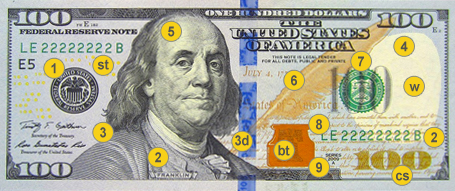
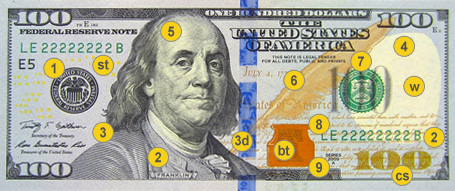
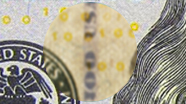
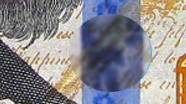
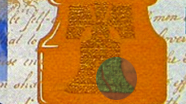
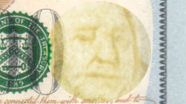
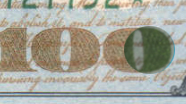
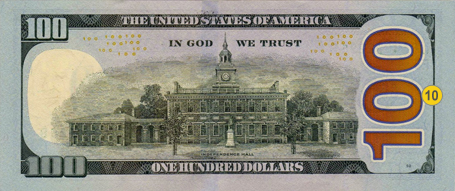
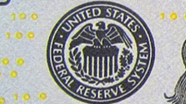
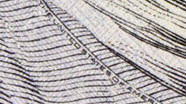
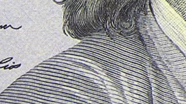
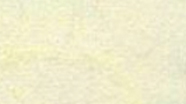
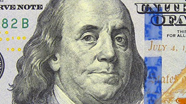
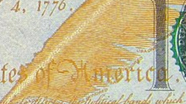
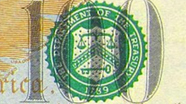
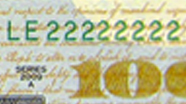
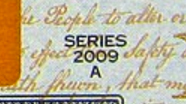
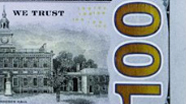
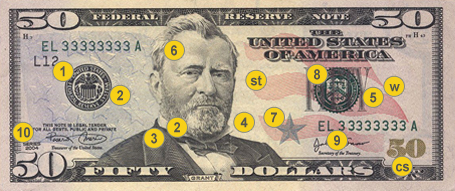
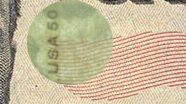
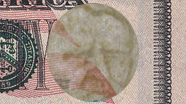
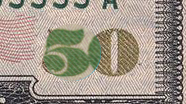
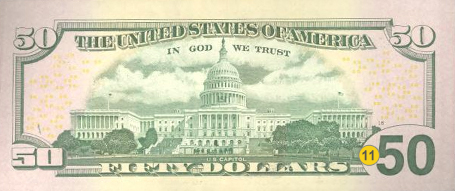
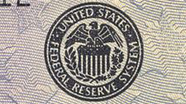
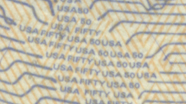
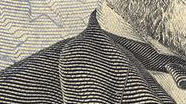
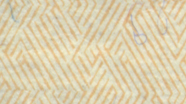
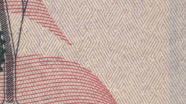
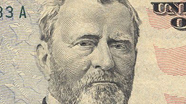
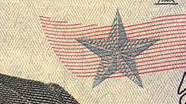
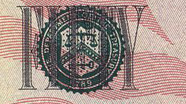
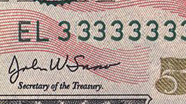
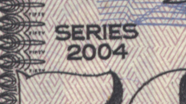
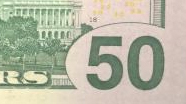
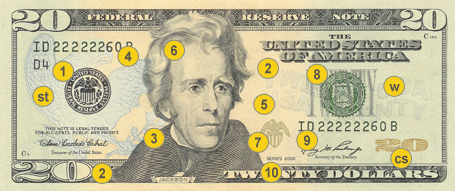

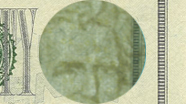
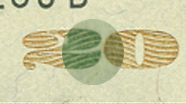
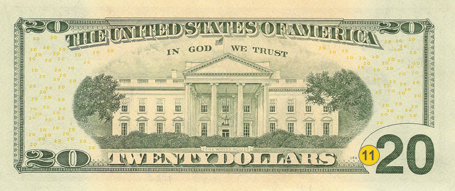
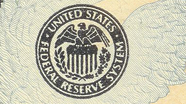
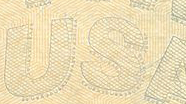
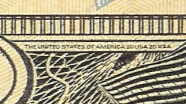
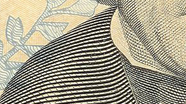
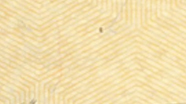
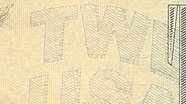
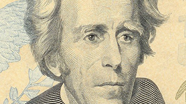
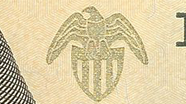
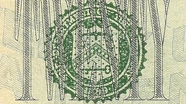
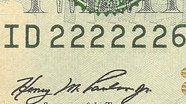
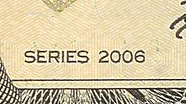
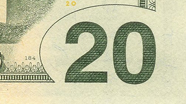
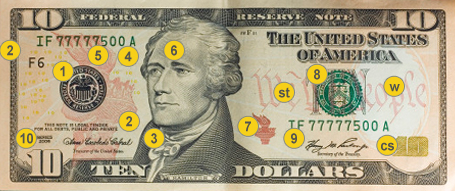
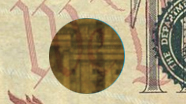
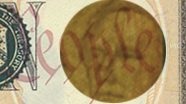
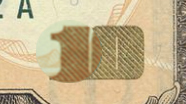
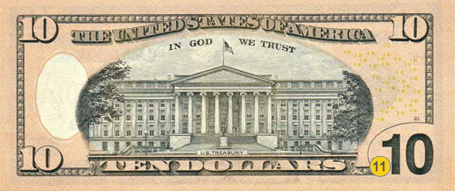
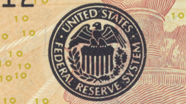
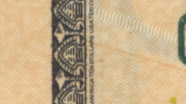
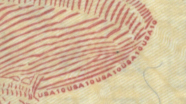
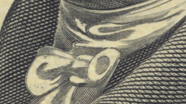
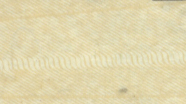
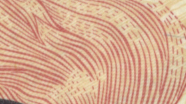
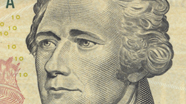
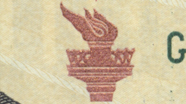
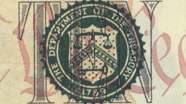
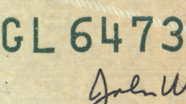
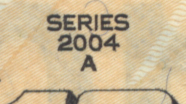
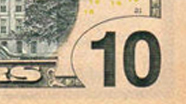
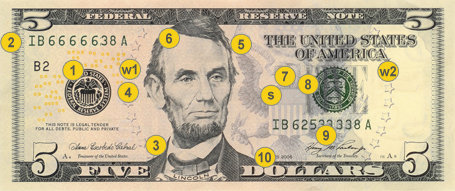
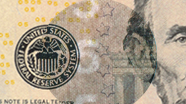
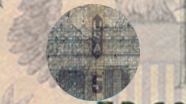
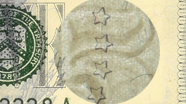
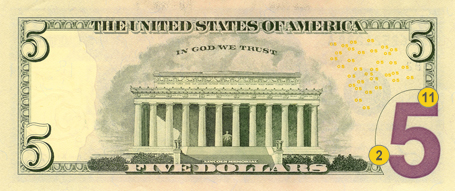
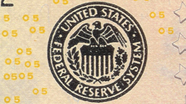
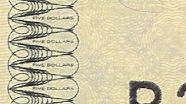
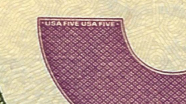
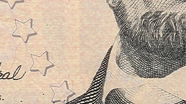
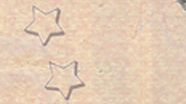
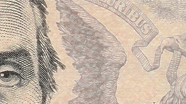
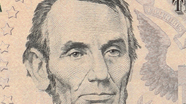
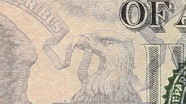
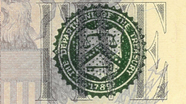
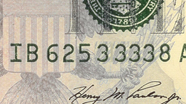
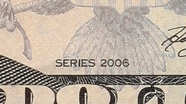
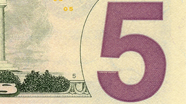
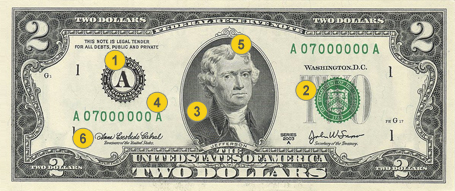
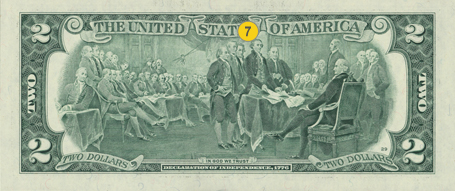
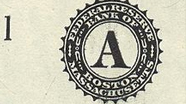
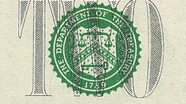
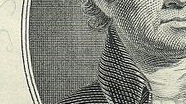
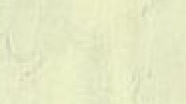
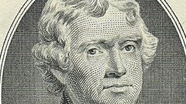
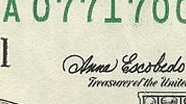
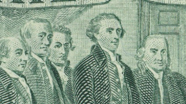
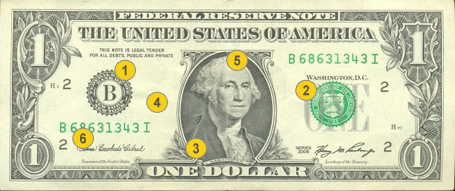
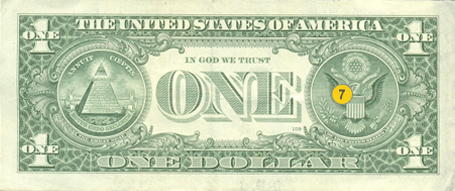
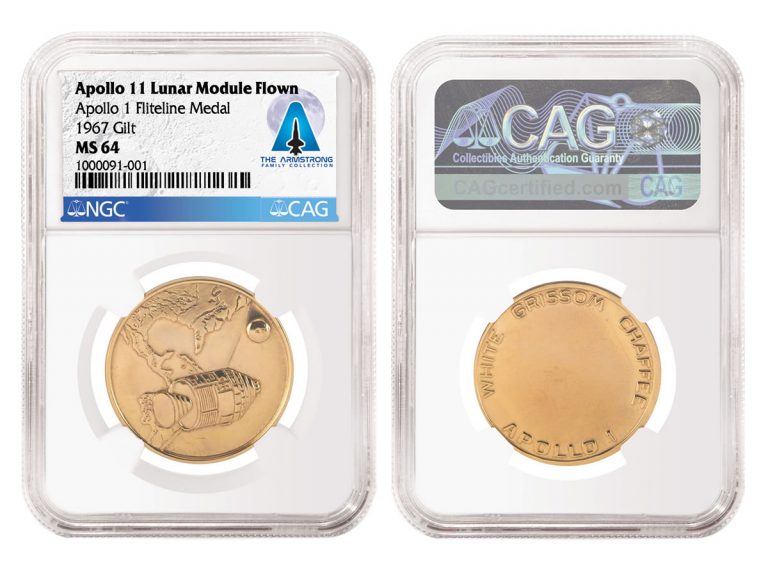
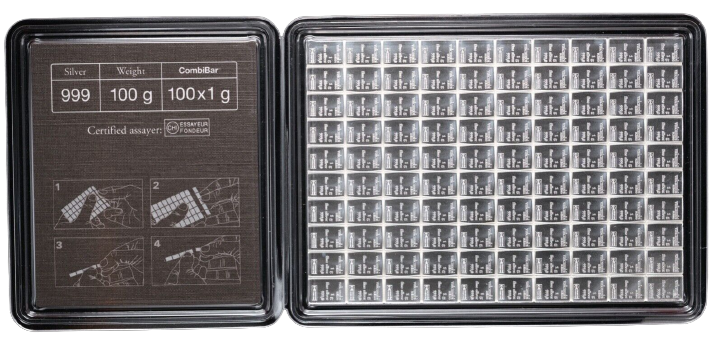
Star notes are replacement notes for notes that had errors, so what if the star note has an error (s)? Would it be worth anything?